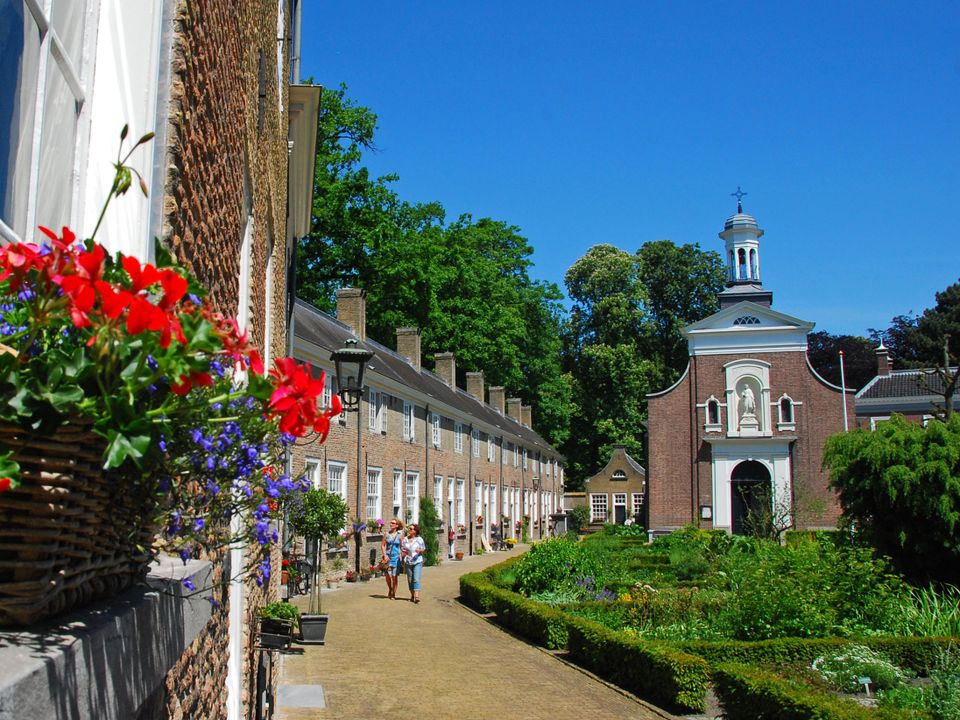Begijnhof

Beguines were single woman who formed a community within the church but had not taken perpetual vows. They were allowed to earn their own living and did so, for example, by running a ‘custodial school’, caring for the sick, manual labour, and praying for the deceased for a fee.
History of the Beguinage
Established in 1267, the Beguinage was originally located closer to Breda Castle. Because Count Hendrik III of Nassau wanted to expand his garden, it was moved in 1534-1535 to its present location.
The low houses were raised by one storey in the 18th centu…
Beguines were single woman who formed a community within the church but had not taken perpetual vows. They were allowed to earn their own living and did so, for example, by running a ‘custodial school’, caring for the sick, manual labour, and praying for the deceased for a fee.
History of the Beguinage
Established in 1267, the Beguinage was originally located closer to Breda Castle. Because Count Hendrik III of Nassau wanted to expand his garden, it was moved in 1534-1535 to its present location.
The low houses were raised by one storey in the 18th century, which is clearly visible in the facades. The Wendelinus Chapel next to the entrance of the Beguinage was the beguines’ church before the Eighty Years’ War. They had to cede their church to the Walloon congregation in 1590. The Beguinage was under the protection of the Nassaus and so could continue to exist.
In the 19th century, when the Catholic religion was more and more openly allowed to be practised again, the Beguinage revived. A new gatehouse was built, and a new church and rectory came into being. Furthermore, a second court also emerged.
The small building to the left of the church was originally the so-called poop house, with the toilets. The gatehouse was replaced once more in 1980.
The Beguinage today
Beguines no longer exist today. The last Beguine, Sister Frijters, died in 1990. The houses in the Beguinage are still occupied by single women. In the former Novices’ House live sisters of the order of ‘Servants of the Lord and Virgin Matará’, better known as Blue Sisters, because of the colour of their habit.
Traditions and customs of the past are kept alive. For example, in the flowerbed opposite the presbytery, there is a so-called witch’s ball. This mirror globe is meant as a deterrent against demons, diseases, adversity, and the devil. The sphere is there from the Ice Saints’ Day to All Souls’ Day.
Herb Garden
At the Beguinage, you will find an extensive herb garden. The beguines had great knowledge of medicinal herbs and used the herbs a lot in caring for the sick.
Musea
The Beguinage is home to two small museums. The gatehouse housese the Miniatures and Dolls’House museum. The Beguinage Museum in one of the houses gives an insight into beguine life.
Explore Royal Breda hotspot
The Begijnhof is part of the Explore Royal Breda route. This route takes you to places that remind you of Breda's royal roots and connects surprising new places with history. Curious? Check out the route here.
Opening times
- Every monday from 12:00 to 18:00
- Every tuesday from 12:00 to 18:00
- Every wednesday from 12:00 to 18:00
- Every thursday from 12:00 to 18:00
- Every friday from 12:00 to 18:00
- Every saturday from 12:00 to 18:00
- Every sunday from 12:00 to 18:00
Prices
- Free